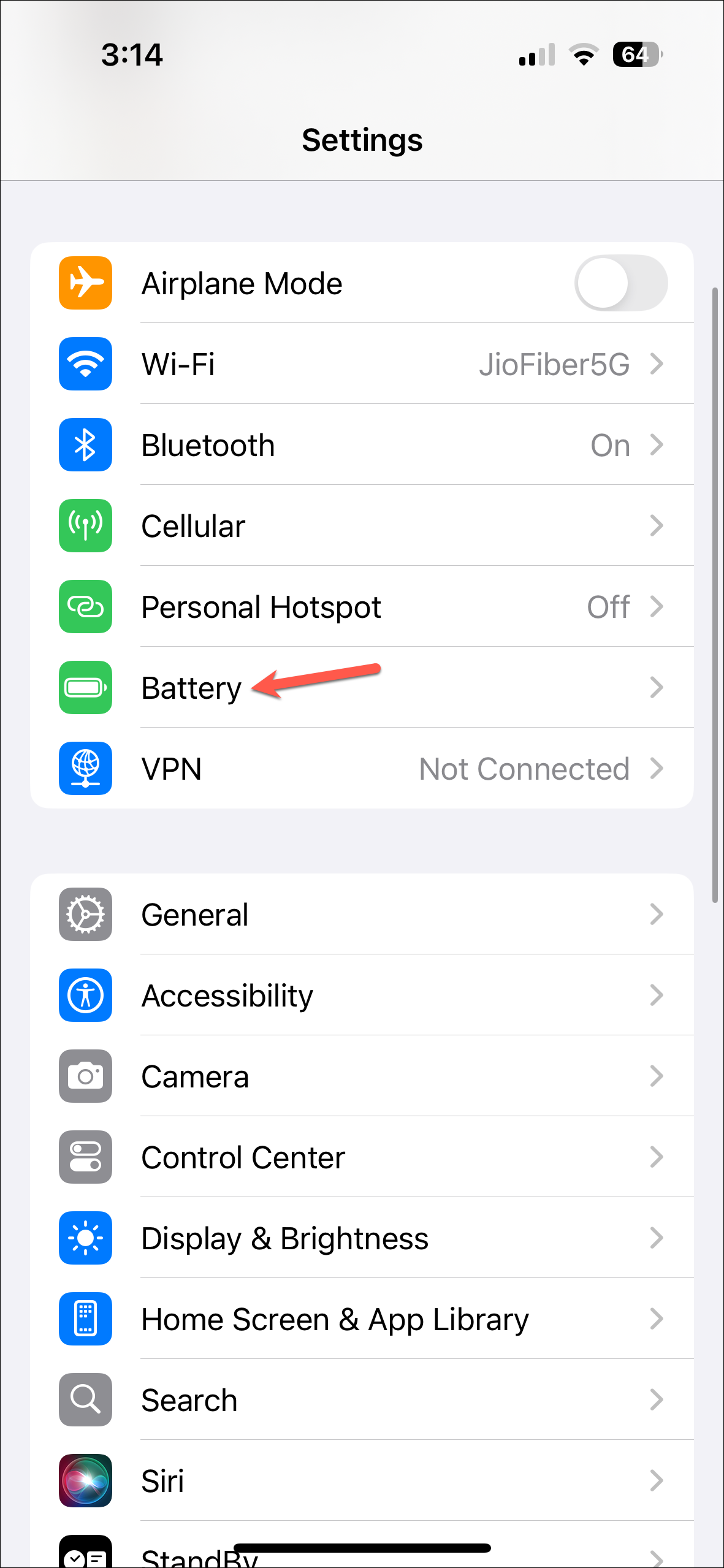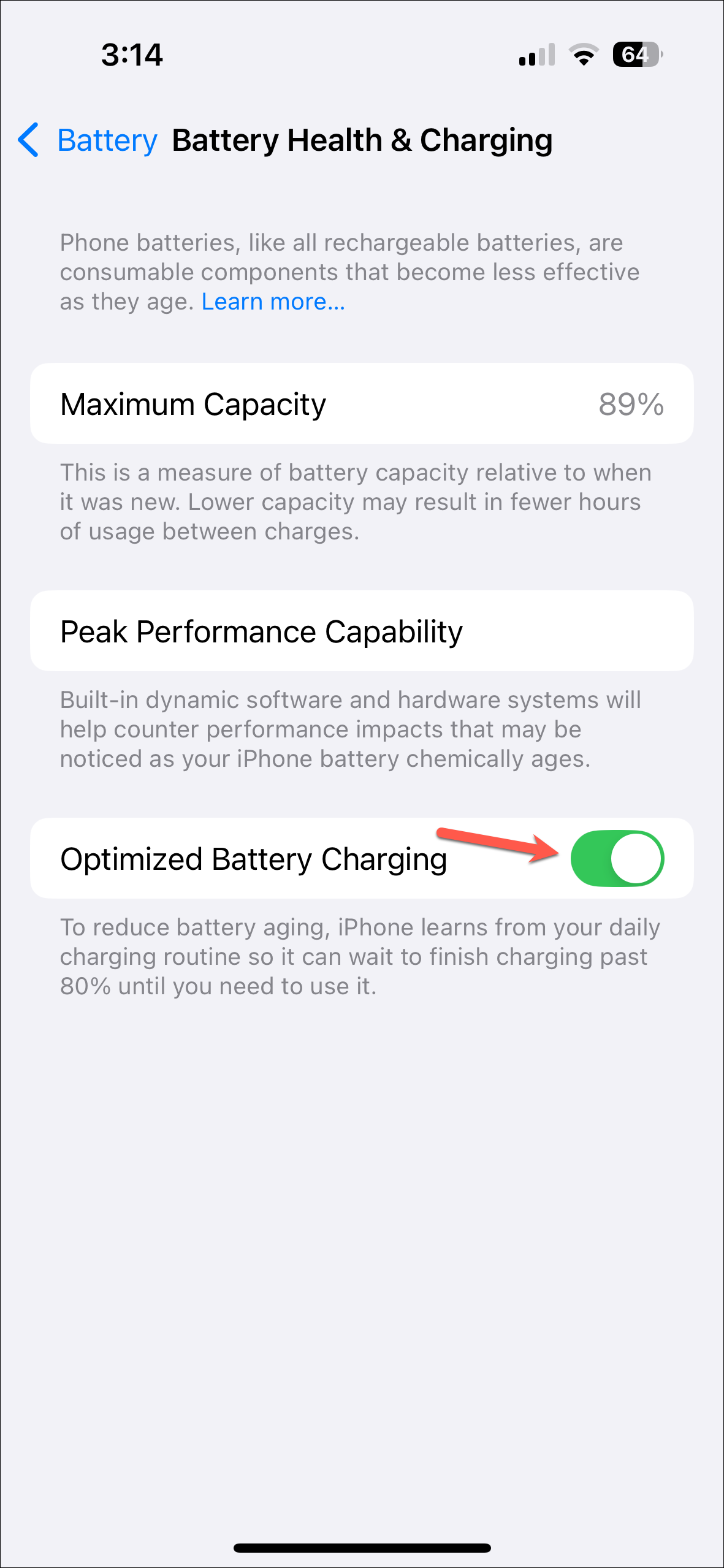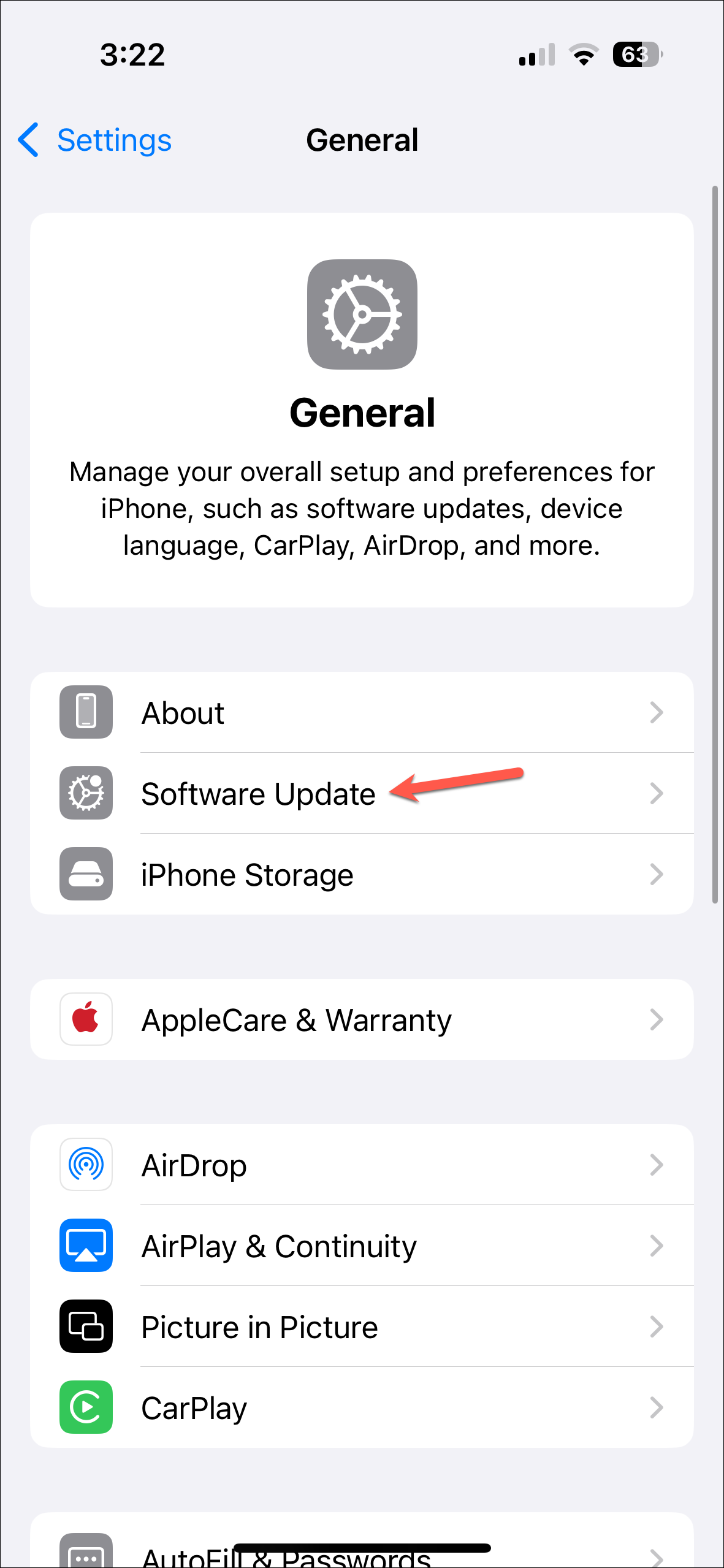- Your iPhone's battery lifespan is the amount of time the battery will last before it needs to be replaced.
- You cannot keep your iPhone's battery health at 100% no matter what you do. Lithium-ion batteries will degrade with use.
- Apple says your iPhone's battery will only be able to retain about 80% of its original capacity after about 500 charge cycles.
- However, you can avoid faster damage and maximize the usage you get out of them by following proper charging habits, environmental considerations, and software management.
Let's be clear. Your iPhone's battery will degrade as you use it, and that's true for any device with a lithium-ion battery, not just your iPhone. The only way to preserve battery health is to not use your iPhone (quite impractical) or use it less to avoid maximizing charge cycles. Now, if you want to get off your phone for other reasons, that's all well and good, but using it less to maximize battery health is again not very practical.
My advice is that don't worry too much about battery health; adopt good charging habits, keep note of environmental conditions and keep the software updated to maximize the lifespan. But other than that, use your phone in a way that brings you joy.
1. Use Optimized Battery Charging
Since iOS 13, iPhones have had an option to optimize and limit battery charging. When optimized battery charging is enabled, iOS learns and adapts to your daily charging routine. Then, it defers sharing to 100 percent until you need to use it so your phone doesn't spend too long on high states of charge.
It also pauses charging if your iPhone's temperature becomes too hot and only resumes it once the temperature returns to a normal range.
- To enable Optimized battery charging, go to
Settings>Battery. - Tap the option for 'Battery Health & Charging'.


- Enable the toggle for 'Optimized Battery Charging'.

2. Avoid extreme temperatures
To prevent permanently damaging your iPhone's battery, keep it from extreme ambient temperatures. While it's designed to work best in the ideal temperature range of 62° to 72° F (16° to 22° C), you should avoid exposing it to ambient temperatures higher than 95° F (35° C) which can cause permanent damage.
3. Avoid full discharges
You should generally try to keep your battery between 20% and 80%. More importantly, avoid letting it drop to 0% frequently and leave it dead for long periods of time. The cells that make up the lithium-ion battery of your iPhone have a limited lifespan. If they stay dead for a long time, there's a chance they might enter a state of deep discharge and never work again.
However even after your iPhone dies, it has some reserve charge (which powers the iPhone is Findable and the new clock feature in iOS 18) to avoid this problem. But try to charge your phone as soon as it dies to prevent battery damage in the long run.
4. Avoid charging overnight
Many people charge their phones overnight because it's the most convenient option. But it's also harmful to your iPhone's battery if you overcharge it frequently. When your battery is already charged to 100% and is still plugged in, it sends more current to the lithium-ion cells that are already at their full capacity, which damages them.
Though keeping the Optimized charging option above helps, it still takes time for your iPhone to learn your routine and avoid charging it to 100% until you need it. So, if you want to maximize the lifespan of your battery, avoid charging it overnight.
5. Remove certain cases during charging
Keping your iPhone in a case is a good idea, especially if you drop your phone a lot because that can cause battery damage too (among other damages). However, if you're noticing that charging with certain cases on is leading to extreme temperatures, remove the case before plugging in your phone. Certain style cases may generate excess heat, and as we already know, excess temperatures are damaging for your iPhone's battery.
Also, keep your phone on a hard surface, like a table, while charging as opposed to keeping it on the mattress or a couch to prevent overheating.
6. Use original/ good quality chargers
Low quality chargers can damage your iPhone's battery. Always use either original or Apple MFi-certified accessories (both adapters and cables) to charge your iPhone. There's nothing wrong with using third-party cables, as long as you're using good quality MFi certified cables that can protect against any short circuits or power surges. Cheap, no name cables and adapters can cause damage not just to your iPhone's battery but also other internal components.
7. Don't use your phone while charging
Your phone's temperature increases when you're charging it. If you're using it while charging, it'll increase even further. Some light usage like messaging or scrolling on social media is fine. But something like playing games on your phone while charging it will cause too much overheating. And if you do that often, it's just as good as leaving your iPhone near a heater.
8. Update to the latest iOS
Newest software updates from Apple often contain advanced energy-saving technologies along with other features that improve the performance of your device. This helps keep your battery in good condition as opposed to using older software.
- You can update your iPhone by going to
Settings>General. - Then, go to 'Software Update' and install the latest iOS.


9. Don't use wireless charger often
This is not to say that you should never use a wireless charger; they can be awfully convenient at times. But they can also cause damage to your battery. So when possible, stick to a wired charger (a good quality, MFi certified one). It will be quicker and won't cause any damage either.
10. Charge it to 50% if storing for long-term
If you're planning on storing your iPhone for long term, don't store it at 100% or 0% battery. Neither is good for battery health. If you store it at 0% for a long time, your battery can enter a deep discharge state and become incapable of holding a charge. And contrary to what you might think, even storing it at 100% will lead to your battery losing some of its capacity.
Apple suggests charging it to 50% before storing and if you're planning on storing it for longer than 6 months, you'll need to charge it every 6 months.
There's nothing wrong with making sure that you don't unnecessarily damage your iPhone's battery with reckless practices. If taken good care of, you won't need to replace your iPhone or battery for a long time. And even if you're planning on changing your iPhone soon, an iPhone with a good battery health will have greater resale value. For tips on how to make your iPhone's battery last longer during the day, check out our other guide.



